Ahh, Paris. Synonymous with ideas of romance, luxury, and sophistication, Paris and the fabulousness of France can be found in Paris by Wolfgang Kramer & Michael Kiesling and Rococo. So, what does Paris: La Cite de la Lumiere do differently? It provides a much more intimate version of Paris, one that comes from backpacking, from being on the streets. This two-player tile placement game was released in 2019 from Devir publishing and has earned a permanent place in my collection.
The goal of Paris: La Cité de la Lumière is to acquire the most points by illuminating the buildings you own while making sure your opponents cannot do the same. This is a game of rather intense strategy for such a beautiful and small package.
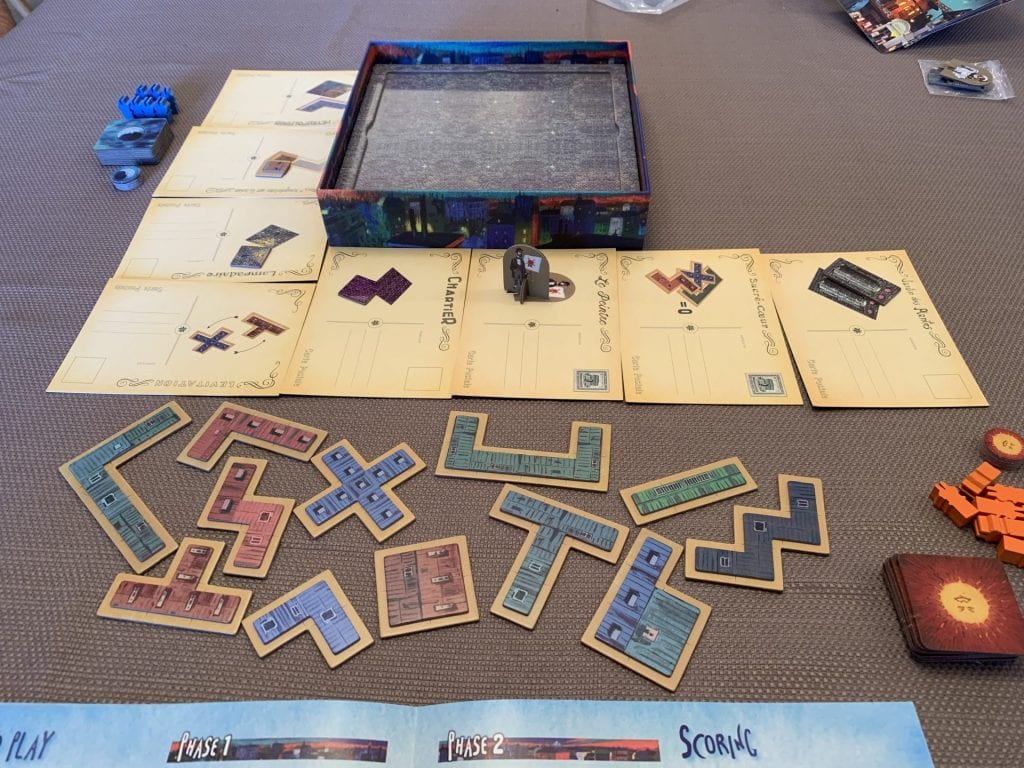
A Dance in Two Parts
Phase 1 – Painting the Streets
The gameplay of Lumière is divided into two rounds; the first is tile placement and building choice. In the first round players take turns placing one of their eight cobblestone tiles on the map or taking a building from the available pool. The tiles are broken into four sections: they can be orange, blue, purple or have a streetlamp. Players want to create connected areas of their colour to place their buildings in. The purple squares can be used by both sides.
The streetlamps are key to victory; in the tile placement segment of the game players have two goals. They want to make sure they are making areas to place their buildings in while denying their opponent the same, and they want to make sure that their buildings are going to be near a light source. In Lumière if your buildings touch no light, they are worth nothing. The building acquisition is a big part of the strategy in phase one as well, players can choose to deny their opponent the perfect building but need to be aware of what they keep in their inventory; any unplaced buildings are also worth negative points at the end of the game.
The round is over when both players have placed all their cobblestone tiles.
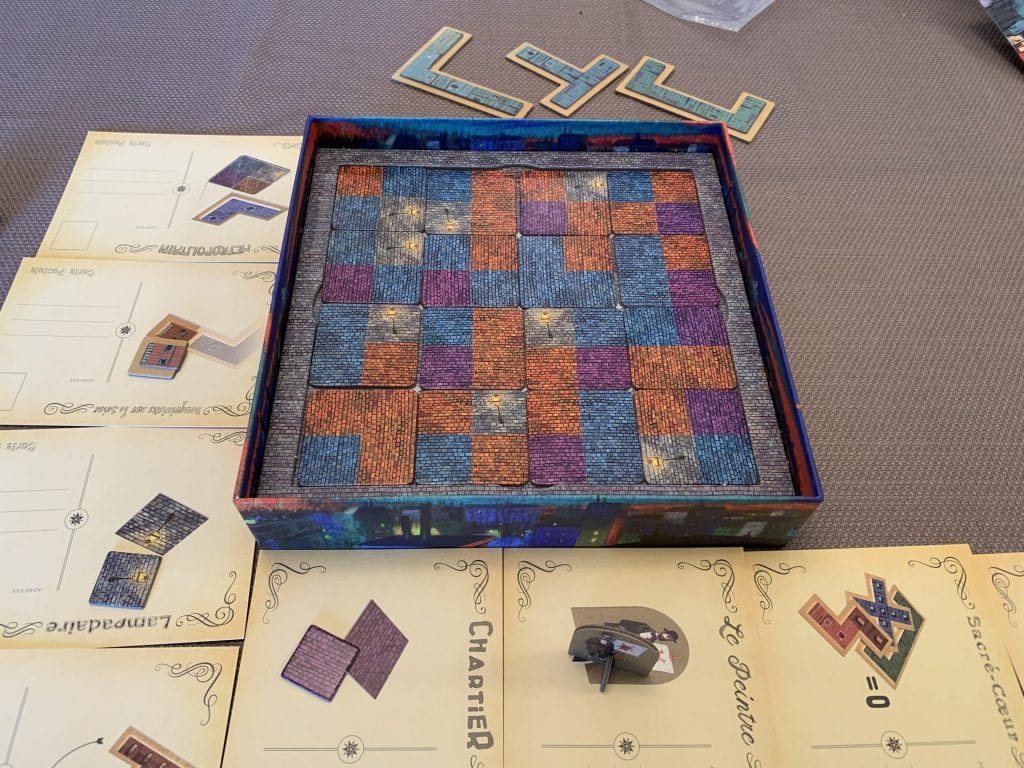
Phase 2 – Claiming Territory
In the second phase players place the buildings they acquired and can now claim action cards. These cards will award players extra points or give them new things to place on the board all depending on what is drawn. La Cité de la Lumière provides a total of 12 action cards, only eight are used each playthrough. From the beginning of the game, players know which ability cards will be available in the second round of play, so there is a danger in relying too heavily on an ability that your opponent might pick first. The tension can be strong during this phase as the precious purple spaces slowly get taken away as do valuable cards which can save your score.
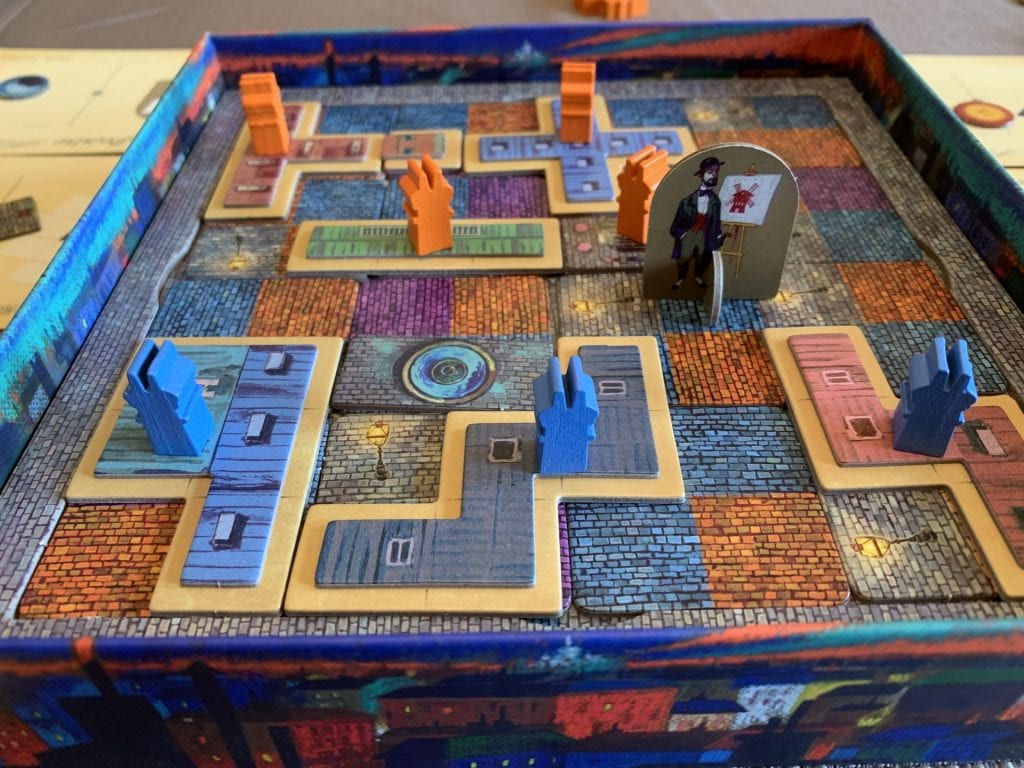
The Rules
The rules for Paris: La Cité de la Lumière are extremely accessible. Personally, I absorb rules much better by seeing something played out, but even I was able to teach this game to my partner with relative ease. I do not recommend the game set up in the manual for the action cards. It says to place two cards on each side of the box. However, it meant that we could not see the abilities available on the other side. Small nitpick, we placed them on two sides instead.
The scoring system is nicely outlined, and the rules also have an example in case there is any confusion. Overall, a very nicely laid out rulebook. However, the action postcard section seemed unnecessary because there was room on the postcards themselves for the rules. This is a probable way of keeping costs down, components in different languages could have made this bargain of a game have a higher retail price.
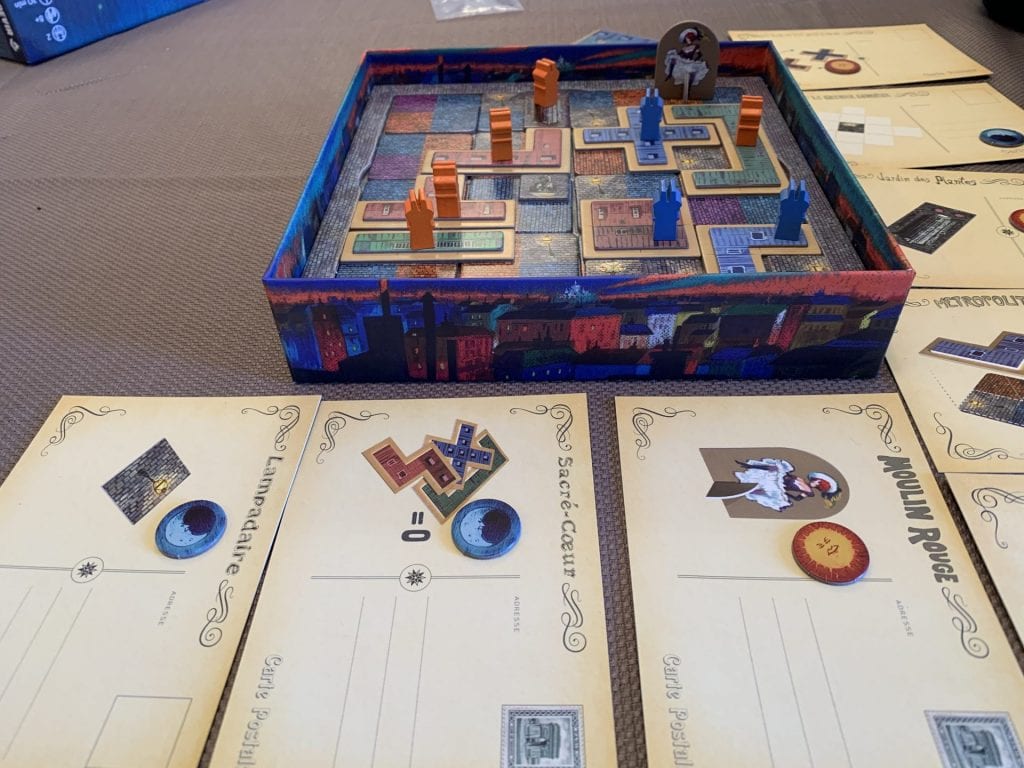
The Components
The theme is stunning and well utilized throughout the game and components; it takes place during the 1889 World’s Fair when electricity was the next hottest thing and the French government wanted to stun everyone with how beautiful and advanced the streets of Paris were. At the end of the game, you are left with something that feels akin to old European city streets.
The colours are rich and well chosen; complementary blues and oranges compromise the player pieces while an impressionist Parisian skyline surrounds the player area. The pieces have a level of detail that would be expected from a much more expensive game; the player pieces are chimneys placed on top of houses, the tiles are pretty cobblestone roads instead of block colours and the buildings have raised edges that help to create the image of a 3D space.
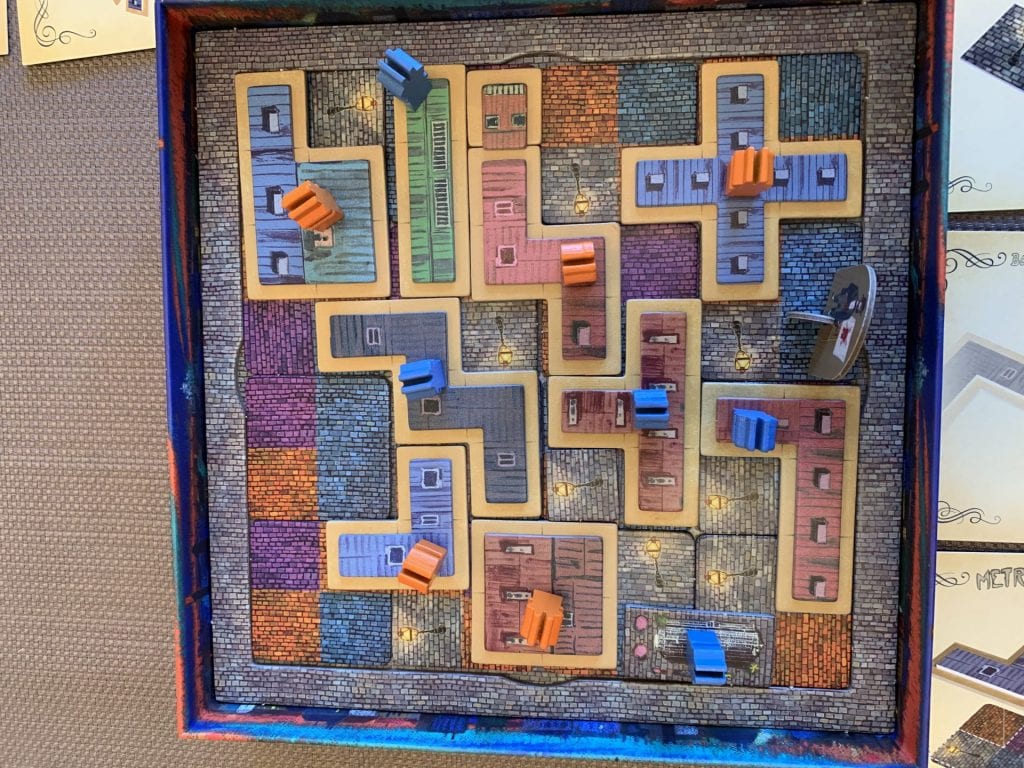
There is one component of the game which is slightly disappointing – the ability cards. The cards have fantastic period art on the one side and on the other is a visual representation of what ability or piece will be used. The rules say that when an ability is used the player should flip the card to show that it has been used. However, they also provide players with tokens to place on the cards. In practical gameplay my partner and I never saw the need to flip over the card, we placed those tokens instead – and so never got to see the beautiful postcard art on the other side. Furthermore, there is plenty of room on the cards for the ability instructions. Why reference the rulebook when everything could have been on the board? Maybe this is a bit nitpicky but when considering the simplicity of the game, it would be great to have everything in the same space.
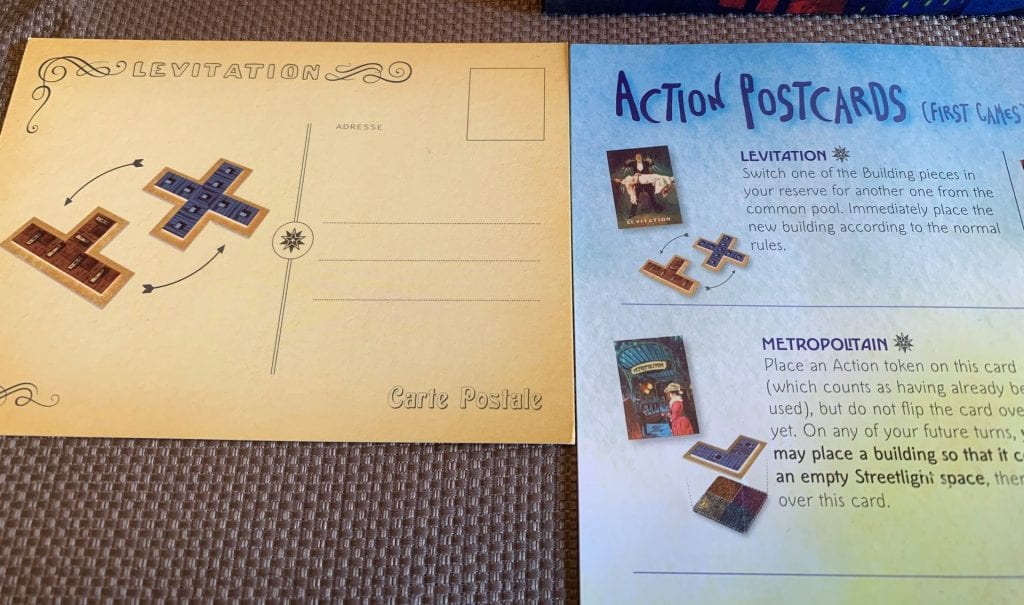
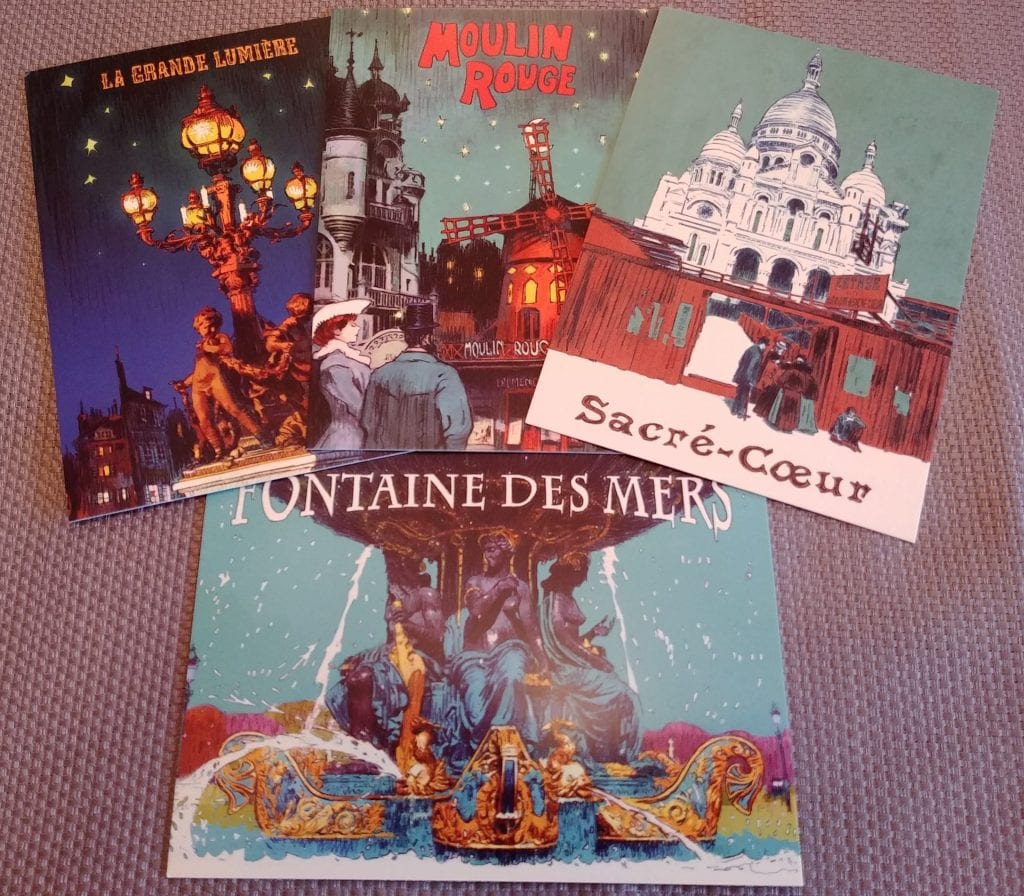
A Game that Sparkles and Shines
Overall, Paris: La Cité de la Lumière is a wonderful game that I would recommend to any couple, anyone who likes art, anyone who likes to quietly contemplate a move, anyone who is competitive or anyone who loves Paris. The game is quick and simple; it takes 30 minutes maximum and is worthy of multiple plays a night. There are many layers of strategy to the game, it is a gorgeous production, and it takes up little space on the shelf. This game is extraordinarily affordable for its production value at a measly $24 CAD. Despite a few design nitpicks, this is virtually a perfect game. Grab a glass of wine, some fancy cheese and play Paris: La Cité de la Lumière. It’ll be a game to remember.


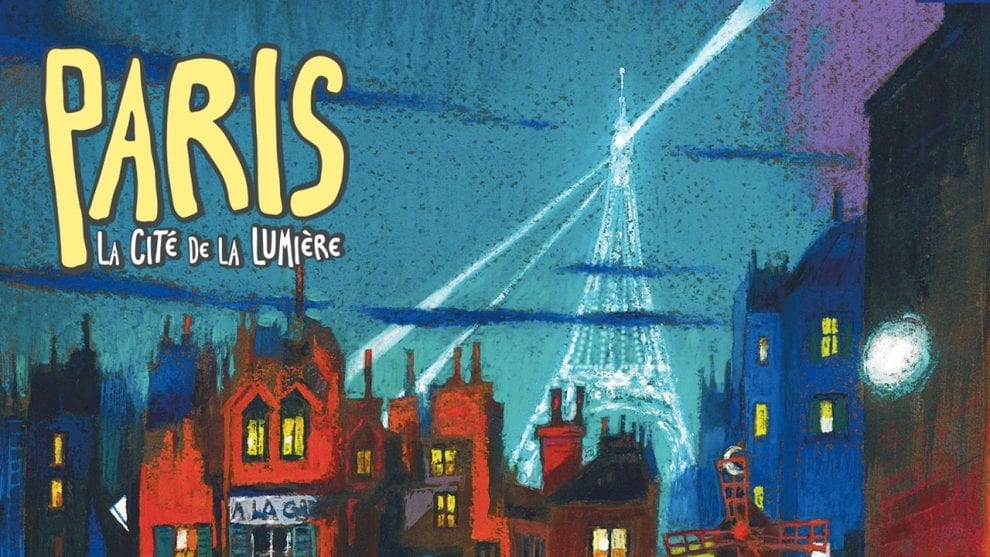









Add Comment